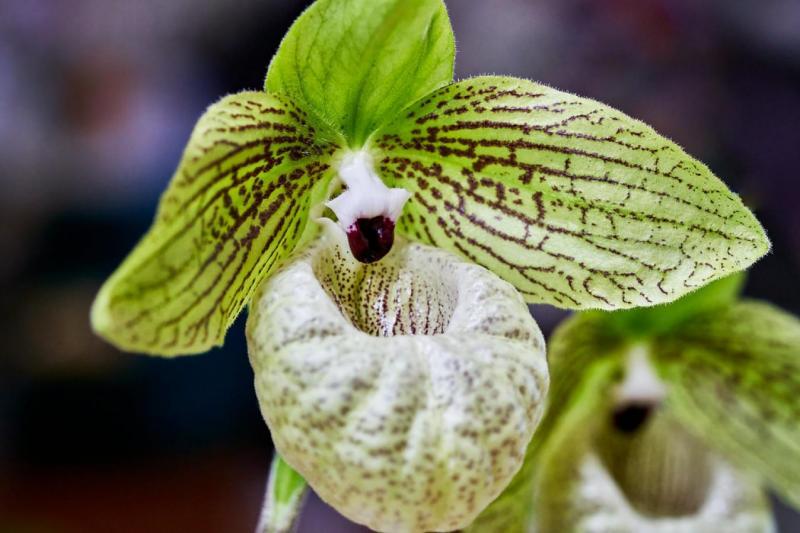Paphiopedilum malipoense
Also known as: The Malipo Paphiopedilum or Paphiopedilum malipoense f. virescens Paphiopedilum angustatum Paphiopedilum malipoense f. tonnianum Paphiopedilum malipoense h.f. semialba Paphiopedilum malipoense h.f. alba Paphiopedilum malipoense h.f. semialbum Paphiopedilum malipoense var. malipoense Paphiopedilum malipoense var. angustatum Paphiopedilum malipoense h.v. jackii h.f. virescens Paphiopedilum malipoense f. concolor Paphiopedilum malipoense h.f. album in the subfamily: Cypripedioideae
Native to: China
General Information
The Malipo Paphiopedilum is a cool to warm growing lithophytic orchid belonging to the sub family Cypripedioideae native to China. It is named after the Area in China.
Plant Description
Grows to 15-20cm. Each new growth has numerous leathery erect, elliptic, oblong shaped leaves that grow to 2-20cm long
Substrate(s)
- Coarse
- Spaghnum Moss
Care Notes
These orchids like to be kept on the dry side, but may need to be watered daily during warm weather, and prefer a well draining mix or also do well mounted, provided they can be watered regularly.
These are quite a forgiving orchid, there are no special requirements to get this orchid to flower, just good care and consistent conditions. Larger plants may be more fussy and can react poorly to change; a poorly timed repotting, a pest infection or an unusually hot day can set them back for a couple of years. However, even plants that have been treated poorly can thrive, and if they are set back they often recover much stronger then they would otherwise be.
Climate
Grows at low to high elevations. Rainfall ranges from 13mm to 170mm per day, heaviest in July and lightest in January. Temperature ranges from 6C to 26C, highest in June (19C to 26C) and lowest in December (6C to 14C).
Watering
These orchids are sensitive to excessive watering and should only be watered when they look thirsty. Water infrequently and ensure that the roots are dry before watering. Keep an eye on them especially during hot weather as overwatering can lead to rot, whereas underwatering may result in wilting or shriveling, which while unattractive, will not kill the plant.
Fertiliser
These orchids do not need to be regularly fertilised and roots may be sensitive to salt build-up, dying back and therefore impairing the plants growth or even killing it.
If fertilising, use half to quarter of the recommended amount of fertiliser. If they receive fertiliser as part of a collection, be sure to flush out the pots regularly with fresh water and monitor the roots by checking how much resistance is given by the plant when nudged in its pot or mount. If the plant becomes wobbly or loose, repot in fresh mix or rinse the media/mount thoroughly and do not fertilise for at least 3 months.
Be sure to flush out excess fertiliser by running water through the media regularly year round. Use a high Nitrogen fertiliser during Summer. Use a high Phosphorous fertiliser during Summer.Potting
Due to the growth nature of these plants they are best mounted onto cork, tree fern slabs, or even trees if the climate suits. Water regularly especially in hot weather.
Use water retentive media such as moss to prevent roots from drying out quickly This plant does very well in baskets or suspended pots This plant does well mounted. Repotting is best done annually.




















